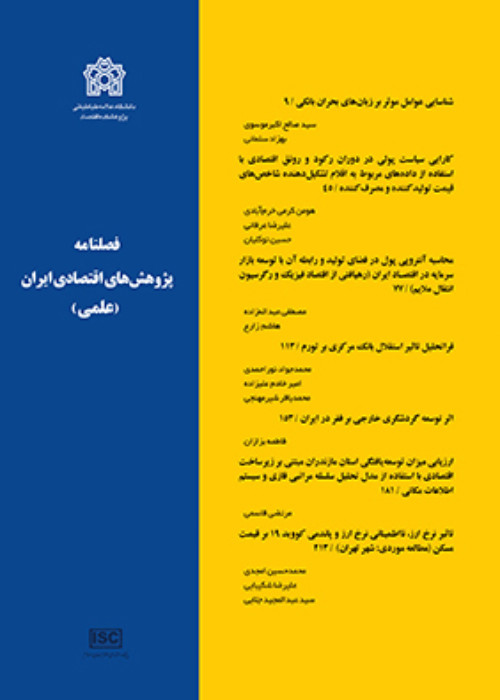Exchange rates and trade balance: the case of IranWelfare eEffect of exchange rate policy on welfare
Author(s):
Abstract:
This paper, studies the impact of Rial's real devaluation and scale (domestic and foreign real income) variables on Iran's trade balance using of Johansen-Juselius and ARDL methods during the period 1338-1383. According to co-integration tests, trade balance variables, domestic and foreign income and black market exchange rate are co-integrated and create a long run equilibrium relationship. Moreover, all the long- and short- run coefficients have expected signs, being stable during sample period. However, the official exchange rate is not able to explain trade balance fluctuations satisfactorily during the sample period. The results of co-integration tests reject the null of long run equilibrium relationship among trade balance, scale variables and official exchange rate. The diagnostic tests in the error correction models with official rate imply serious is specifications too. The study suggests the need to monitor the black market rather than official exchange rate. The main purpose of this paper is to examine an appropriate exchange rate policy in Iran. Most of the studies in Iranian economy have suggested a flexible exchange rate policyies with a coordination between monetary and exchange rate policies for the Iranian economy. In this paper, paper, we test the hypothesis that the managed exchange rate policyies is the most appropriate policyies for Iran using the Mundell-_Fleming model, and 2sls 2SLS method for period 1974-2004. The estimated macro _ econometrics model has beenis used to simulate the reaction of five exchange rates regimes to fluctuations of net asset from abroad of in the banking system shocks. The results reveals that the managed exchange rates in terms of trade balance and purchasing power paritypolicy are expected wouldto yield a more stable prices, prices, imports, welfare and money stock. In contrast, a quasi-_floating exchange rate policyies, in which the exchange rate is determined by the percentage of trade balance deviations, will result in the worst kind of volatility in prices, prices, imports, welfare and money stock. stock.
Language:
Persian
Published:
Iranian Journal of Economic Research, Volume:9 Issue: 31, 2007
Page:
1
magiran.com/p463867
دانلود و مطالعه متن این مقاله با یکی از روشهای زیر امکان پذیر است:
اشتراک شخصی
با عضویت و پرداخت آنلاین حق اشتراک یکساله به مبلغ 1,390,000ريال میتوانید 70 عنوان مطلب دانلود کنید!
اشتراک سازمانی
به کتابخانه دانشگاه یا محل کار خود پیشنهاد کنید تا اشتراک سازمانی این پایگاه را برای دسترسی نامحدود همه کاربران به متن مطالب تهیه نمایند!
توجه!
- حق عضویت دریافتی صرف حمایت از نشریات عضو و نگهداری، تکمیل و توسعه مگیران میشود.
- پرداخت حق اشتراک و دانلود مقالات اجازه بازنشر آن در سایر رسانههای چاپی و دیجیتال را به کاربر نمیدهد.
In order to view content subscription is required
Personal subscription
Subscribe magiran.com for 70 € euros via PayPal and download 70 articles during a year.
Organization subscription
Please contact us to subscribe your university or library for unlimited access!


